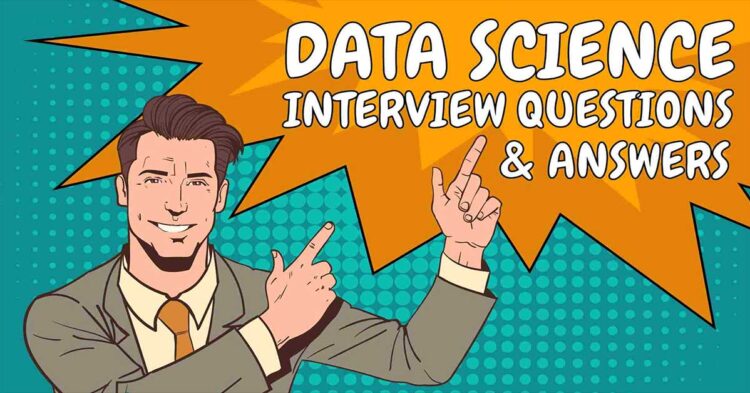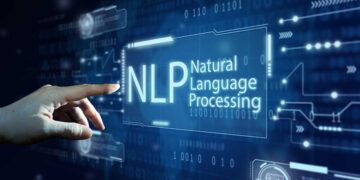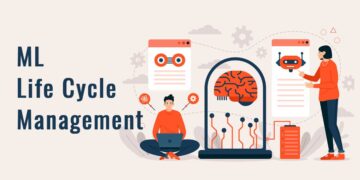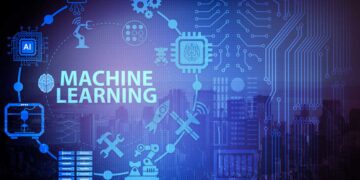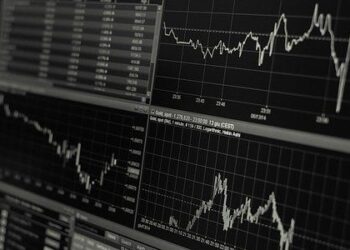Data science is a rapidly growing field, and staying updated with the latest interview questions is essential for success. Here are the top 50 data science interview questions and answers for 2023 to help you prepare for your next interview.
General Questions
- Q: What is data science?
A: Data science is an interdisciplinary field that combines domain expertise, programming skills, and knowledge of mathematics and statistics to extract valuable insights from data. - Q: What are the main components of data science?
A: The main components of data science include data exploration, data cleaning, data analysis, data modeling, and data visualization.
Statistics
- Q: What is the difference between population and sample?
A:- Population: The entire set of individuals or objects of interest.
- Sample: A subset of the population used to make inferences about the entire population.
- Q: What are the measures of central tendency and dispersion?
A:- Central tendency: Mean, median, and mode.
- Dispersion: Range, variance, and standard deviation.
Also read: Best Free Datasets Resources To Help You In Your Data Science Projects
Data Exploration and Preprocessing
- Q: What is the purpose of exploratory data analysis (EDA)?
A: EDA is an approach to analyze datasets to summarize their main characteristics, often using visual methods, to gain insights and better understand the data before proceeding to formal modeling. - Q: What are common data preprocessing techniques?
A:- Handling missing values: Imputation, deletion, or interpolation.
- Scaling: Min-max scaling, standardization, or normalization.
- Encoding categorical variables: One-hot encoding, label encoding, or ordinal encoding.
Machine Learning
- Q: What is the difference between supervised and unsupervised learning?
A:- Supervised learning: Training a model using labeled data.
- Unsupervised learning: Training a model without labeled data, allowing it to discover patterns on its own.
- Q: Explain the difference between classification and regression.
A:- Classification: Predicting discrete labels or categories.
- Regression: Predicting continuous numeric values.
- Q: What is overfitting, and how can it be prevented?
A: Overfitting occurs when a model learns the training data too well, resulting in poor performance on new, unseen data. It can be prevented by using techniques such as cross-validation, regularization, and early stopping. - Q: Explain the k-nearest neighbors (KNN) algorithm.
A: KNN is a non-parametric, lazy learning algorithm used for classification and regression. Given a new observation, it searches for the k closest training examples in the feature space and predicts the output based on the majority class (classification) or the average value (regression) of these neighbors.
Also read: Future of Data Science
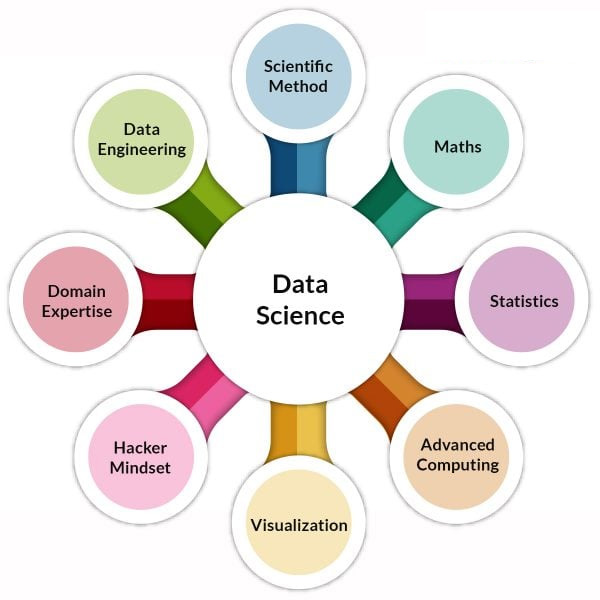
Deep Learning
- Q: What is a neural network, and how does it work?
A: A neural network is a computational model inspired by the human brain, consisting of interconnected nodes or neurons, organized into layers. The network learns by adjusting the weights of connections between neurons to minimize the error between its predictions and the actual output. - Q: What is the difference between a feedforward neural network and a recurrent neural network (RNN)? A:
- Feedforward neural network: Processes data in one direction, without loops or cycles.
- RNN: Includes loops that allow information to persist, making them suitable for sequential data.
- Q: What is the purpose of an activation function in a neural network?
A: The activation function introduces non-linearity into the network, allowing it to learn and model complex patterns and relationships in the data.
- Q: What is the difference between a convolutional neural network (CNN) and a regular neural network? A:
- Regular neural network: A fully connected network where each neuron is connected to every neuron in the adjacent layers.
- CNN: A specialized type of neural network designed for processing grid-like data (e.g., images), using convolutional layers to automatically learn spatial hierarchies of features.
Model Evaluation and Selection
- Q: What is the difference between model accuracy and model precision?
A:
- Accuracy: The proportion of correctly classified instances out of the total instances.
- Precision: The proportion of true positives out of the total predicted positives.
- Q: What is cross-validation, and why is it used?
A: Cross-validation is a technique for evaluating a model’s performance by partitioning the data into k subsets, training the model on k-1 subsets, and validating it on the remaining subset. This process is repeated k times, with each subset used for validation once. Cross-validation helps assess a model’s performance on unseen data and reduces the risk of overfitting. - Q: Explain the bias-variance trade-off.
A: The bias-variance trade-off refers to the balance between the simplicity and complexity of a model. High-bias models are overly simplistic, leading to underfitting, while high-variance models are overly complex, leading to overfitting. The goal is to find a model with an optimal balance between bias and variance, resulting in the lowest generalization error.
Big Data
- Q: What is the CAP theorem?
A: The CAP theorem states that a distributed system can only achieve two out of three properties: consistency, availability, and partition tolerance. - Q: What is the Hadoop ecosystem, and what are its main components?
A: The Hadoop ecosystem is a framework for distributed storage and processing of large datasets. Its main components include the Hadoop Distributed FileSystem (HDFS), MapReduce, YARN, and Hadoop Common. - Q: What is Apache Spark, and how is it different from Hadoop?
A: Apache Spark is an open-source, distributed computing system designed for fast data processing and analytics. Unlike Hadoop’s MapReduce, which uses disk-based storage, Spark uses in-memory processing, resulting in faster performance.
Data Visualization
- Q: What are the key principles of data visualization?
A: The key principles of data visualization include simplicity, clarity, consistency, and the effective use of visual elements such as color, size, and shape to convey information. - Q: What are some popular data visualization tools? A: Popular data visualization tools include Tableau, Microsoft Power BI, Plotly, matplotlib, and Seaborn.
Feature Engineering
- Q: What is feature engineering, and why is it important?
A: Feature engineering is the process of creating new features or transforming existing features to improve the performance of a machine learning model. It is important because it helps to capture underlying patterns in the data and improve model accuracy. - Q: What are some common feature engineering techniques?
A: Common feature engineering techniques include:
- Feature scaling: Standardization, normalization, or min-max scaling.
- Feature encoding: One-hot encoding, label encoding, or ordinal encoding.
- Feature extraction: Principal Component Analysis (PCA), t-Distributed Stochastic Neighbor Embedding t-SNE), or Linear Discriminant Analysis (LDA).
- Q: What is dimensionality reduction, and why is it useful?
A: Dimensionality reduction is the process of reducing the number of features in a dataset while preserving the essential information. It is useful for reducing computational complexity, mitigating the curse of dimensionality, and improving model performance.
Language Processing (NLP)
- Q: What is tokenization in NLP?
A: Tokenization is the process of breaking down the text into individual words or tokens, which can be further analyzed or used as input for machine learning models. - Q: What is the difference between Bag-of-Words (BoW) and Term Frequency-Inverse Document Frequency (TF-IDF)?
A:
- BoW: A representation of text that describes the occurrence of words within a document, ignoring the order of words.
- TF-IDF: A numerical statistic that reflects the importance of a word in a document, considering both its frequency in the document and its rarity across a collection of documents.
Time Series
- Q: What is a time series, and what are its main components?
A: A time series is a sequence of data points collected at regular intervals over time. Its main components include trend, seasonality, and noise. - Q: What is the difference between time series forecasting and traditional machine learning?
A: Time series forecasting is a specialized area of machine learning that deals with predicting future values based on historical data, while traditional machine learning focuses on general patterns and relationships in the data.
Model Deployment
- Q: What is model deployment, and why is it important?
A: Model deployment is the process of integrating a trained machine learning model into a production environment, making it available for use by other applications or services. It is important because it allows organizations to utilize the insights generated by the model in real-world applications, driving value and decision-making.
Ethics and Bias
- Q: What is algorithmic bias, and why is it a concern in data science?
A: Algorithmic bias refers to the presence of systematic errors in the output of an algorithm, often resulting from biased input data or flawed model assumptions. It is a concern because it can lead to unfair, discriminatory, or inaccurate outcomes, potentially causing harm to individuals or reinforcing existing societal inequalities.
Miscellaneous
- Q: What is ensemble learning?
A: Ensemble learning is a technique that combines the predictions of multiple machine learning models to improve overall performance, often resulting in better accuracy and generalization. - Q: What is the difference between online learning and batch learning?
A:
- Online learning: Training a model incrementally, updating the model with each new data point.
- Batch learning: Training a model on the entire dataset at once, often requiring more memory and computational resources.
In conclusion, preparing for data science interviews requires a solid understanding of key concepts, techniques, and tools. This blog post has provided you with the top 50 data science interview questions and answers for 2023. Keep honing your skills and practicing with real-world examples to increase your chances of success in your job search.

